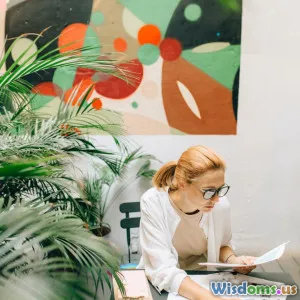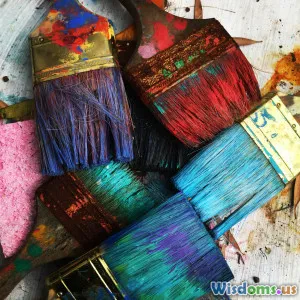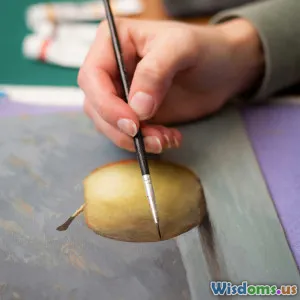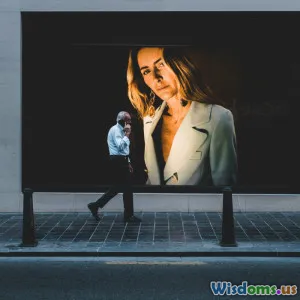
Digital Painting Secrets Professional Artists Never Reveal
8 min read Unveil the hidden digital painting techniques pros keep secret to elevate your art to new heights. (0 Reviews)
Digital Painting Secrets Professional Artists Never Reveal
Digital painting is a unique fusion of art and technology, allowing creators to unleash their imagination through pixels. While talented professionals produce stunning creations that awe audiences, many of their nuanced techniques remain closely guarded secrets. If you’ve ever wondered how elite digital artists achieve breathtaking details, perfect tones, or realistic textures without visible struggle, this article pulls back the curtain.
This comprehensive guide lays bare the guarded digital painting secrets professional artists rarely share publicly, revealing insider methods, workflow hacks, and mindset shifts that can elevate your art practice to a whole new level.
Master the Power of Custom Brushes: Beyond Defaults
Understanding Why Custom Brushes Matter
Most beginners rely heavily on stock brushes provided by software like Adobe Photoshop or Procreate. While these work well initially, professional artists know that custom brushes are the gateway to versatility and depth. Custom brushes—invented or downloaded—save time and produce effects unachievable with default settings.
Example: Famous digital painter Feng Zhu often creates brushes mimicking traditional media textures, like gritty pencil or rough canvas grain, adding authenticity to digital art that feels hand-crafted.
How to Design Your Brushes
Custom brush creation hinges on understanding brush parameters: shape, scatter, spacing, jitter, and texture. Pro artists tweak each setting to replicate elements such as fur, foliage, cloth, or skin pores. They don’t settle for just one—artists accumulate a carefully curated brush library tailored to their specific styles and project needs.
Tip: Learn from industry tutorials that explain brush dynamics step-by-step—mastering this skill enormously increases creative freedom.
The Subtle Art of Layer Management
Smart Use of Layers Saves Your Sanity
Professional digital artists swear by a disciplined organizational workflow employing layers. Beyond simply stacking elements, they name, group, and use layer masks to isolate adjustments with surgical precision.
Consider renowned concept artist Jama Jurabaev who layers sketches, tonal painting, color harmonies, and highlights separately. This practice allows experimentation without destructive mistakes, speeding up trial and error.
Layer Blend Modes Unlock Color & Lighting Magic
Blend modes are not just about opacity. Secret use of modes like Overlay, Soft Light, or Color Dodge can add vibrancy or believable lighting nuances. Pro artists often delicately brush light or shadow on Overlay layers, creating that enviable glow.
Data Insight: Studies of concept art portfolios show that masterful layer blending corresponds to higher viewer engagement, proving the technique’s impact.
Leveraging Software Shortcuts and Tools for Efficiency
The Speed Factor Matters
In the fast-paced freelance and gaming industries, time is money. Established digital painters utilize software shortcuts, custom hotkeys, and graphic tablet express keys to maintain flow states.
For instance, top professionals invest time customizing shortcuts in Clip Studio Paint or Photoshop, reducing mouse journey time by 30-40%. This small efficiency gains accumulate to more time focused on creativity.
Specialized Tools Pro Artists Depend On
Tools like Magic Wand or Select Color Range are often used in unexpected ways beyond simple selections—artists manipulate edge refinement or color grading after making subtle layer masks based on these selections.
Moreover, advanced functionalities like Photoshop’s Smudge tool with pressure sensitivity or the Mixer Brush simulate real paint blending, offering a tactile feeling crucial for convincing textures.
Mastering Color Theory and Lighting Nuances
Teaching Color Language Beyond Basic Theory
While foundational knowledge of color wheels and complementary colors is essential, pros dive deeper. They study atmospheric perspective, color temperature shifts, and local vs. reflected light to add chemical realism.
Pro digital artist Lois van Baarle highlights how subtle desaturation in midtones conveys realism—an artistic secret often overlooked by beginners who apply colors too saturated or purely.
Lighting: The Unsung Hero
Lighting dictates mood and depth. Many pros mentally break down scenes into dominant light sources, secondary reflections, and bounced light, carefully painting shadows to emphasize form.
Quote: “If your light is believable, your drawing sells itself,” says digital veteran Mike Winkelmann (Beeple).
Embracing Iterative Refinement and Feedback Loops
Digital Means Editable—Use It!
The accessibility of undo and layers can tempt beginners into rushing, but pros embrace multiple iteration rounds. They zoom out regularly to check composition balance, and re-evaluate colors to avoid flatness.
Seeking Constructive Criticism
Professional artists rarely work in a vacuum. They participate in critique groups or trusted communities soliciting feedback, which exposes blind spots and enhances creative decisions.
Example: Many top art mentors like Scott Robertson emphasize peer review as an essential step before finalizing a piece.
Mindset and Workflow Habits That Fuel Professionalism
Discipline vs. Inspiration
Contrary to romantic myths, pros establish habits prioritizing discipline—they allocate defined daily hours to painting, establishing rituals minimizing distractions.
Knowing When to Stop
One subtle secret is understanding completion. Pros develop instincts to recognize when a piece is done, avoiding endless tweaking—a critical skill that comes with experience.
Continuous Learning & Tool Exploration
Since software updates constantly evolve tools, leading artists stay willing to experiment and adapt. This mindset keeps their work fresh and efficient.
Conclusion
The secrets behind professional digital painting aren’t magic—they are the result of mastery acquired through intentional practice, smart use of tools, and disciplined workflow. From creating tailored brushes and managing layers with surgical precision to understanding complex lighting setups and iterative refinement, these insider secrets unlock potential accessible to dedicated digital artists.
Implementing these industry-honed techniques will gradually transform your digital paintings from good to mesmerizing. Your growing art toolbox, coupled with an evolving mindset focused on feedback and discipline, paves your path toward pro-level artistry.
By revealing what’s usually hidden, this guide invites you to take action—challenge assumptions, experiment boldly, and develop your unique digital painting voice.
Happy painting!
Rate the Post
User Reviews
Popular Posts




















